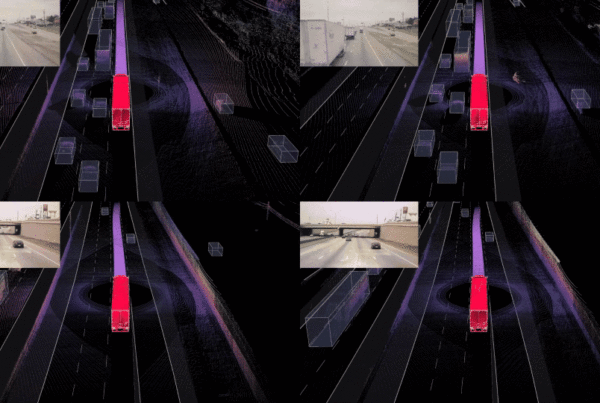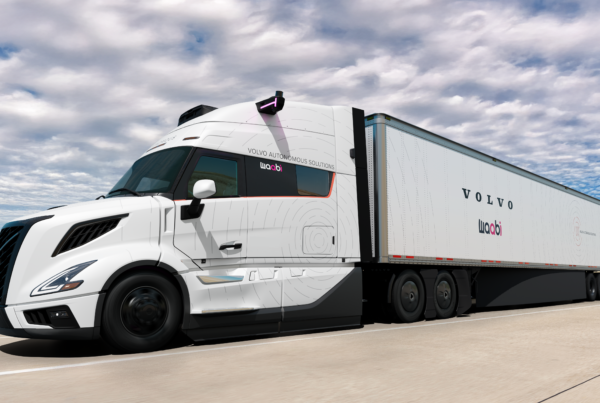Artificial intelligence has been propelling our society forward for years. Deep learning first put a spotlight on AI’s versatility and the recent generative AI explosion has shown the world what is possible when AI can understand context, apply knowledge, and communicate ideas, all learned from the wealth of information available in the digital world. This technology has shown it’s capable of anything from writing stories and songs to passing standardized tests, transforming the ways in which we interact with computers.
This is just the beginning of the generative AI revolution. The next giant leap is evolving generative AI capabilities from existing solely “in computers”, like today’s large language models, to transforming the physical world and bringing meaningful change to transportation, home care, and much more. At Waabi, we’ve been building this technology since day one.
Our approach to developing revolutionary autonomous driving technology is the first manifestation of this next generation of generative AI, and an important departure from the industry’s status quo. The traditional approach to testing autonomous vehicles is incredibly labor- and capital-intensive, needing to expose the vehicle to millions of miles, including rare and infrequent situations, in the real world. This challenge is compounded by the reliance on hand-engineered systems, resulting in complex, brittle, inflexible, and unwieldy software stacks that cannot handle all of the situations that might arise on the road. It’s clear that innovation is needed to overcome these challenges and unlock the future of autonomous driving.
At Waabi, we’re leading with generative AI to radically change the way autonomous driving systems work. We replace the majority of real-world testing with our next generation AI-powered simulation and have developed a foundation AI model for the virtual driver, purpose-built for the physical world. It results in a new approach in which two distinct AI systems interact similar to the way a teacher interacts with a student who is learning how to drive.
The teacher is our AI-powered simulator, Waabi World, a novel breakthrough in generative AI technology. It is the most scalable, highest-fidelity closed-loop simulator ever, and the key to enabling autonomous driving. Backed by our research into sensor simulation, UniSim, Waabi World leverages generative AI to automatically create digital twins of the real world from raw sensor data, and then composes and modifies them to create countless scenarios and realities in which an autonomous vehicle can be trained and tested in an immersive and reactive manner. From inserting or removing other vehicles on the road, to manifesting emergency vehicle situations, accidents, and much more, generative AI is able to create both common driving scenarios and safety-critical edge cases automatically and at scale, reducing the need to drive testing miles in the real world and resulting in a safer, more cost-effective approach to enable autonomous driving.
The student is the Waabi Driver and is composed of a foundation AI model purpose-built for the physical world. In contrast to traditional processes that require painstaking manual code adjustments, our foundation AI model can automatically learn from data, in simulation and the real world, and can generalize its learnings to all the situations it might encounter on the road, including those that it has never seen before. Additionally, unlike today’s large language models which are ‘black boxes’, our foundation model is also interpretable, meaning we can trace its decisions to validate and verify the Waabi Driver — from merging on highways to slowing down in heavy traffic — an important feature for operating safely in the real world.
AI will continue to change our world in new, extraordinary ways. What we’re building for autonomous vehicles — combining generative AI-powered simulation with a foundation AI model purpose-built for acting in the physical world — will enable faster, safer, and more scalable deployment of this transformative technology around the world. It also lays the groundwork for many other domains, industries, and applications outside of autonomous driving. The possibilities are endless, and we’re excited to be at the forefront of what generative AI has in store.





